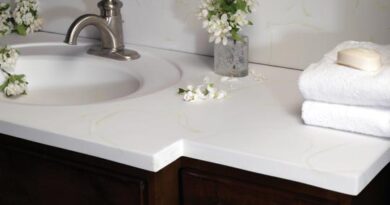The History of Wallpaper: From Ancient China to Modern-Day Trends
Wallpaper has been an essential aspect of interior decoration for centuries. It is a beautiful and functional way to add personality and character to any room. The history of wallpaper is a fascinating one, with many twists and turns that have led to the beautiful wallpapers we see today. In this article, we will explore the history of Black wallpaper, from ancient China to modern-day trends.
Table of Contents
- Introduction
- Ancient Chinese Wallpaper
- The European Renaissance
- The Rise of Wallpaper in England
- The Industrial Revolution
- The Arts and Crafts Movement
- Art Nouveau and Art Deco
- Mid-Century Modernism
- The 1970s and 80s
- Contemporary Trends
- Types of Wallpaper
- Wallpaper Installation
- Maintaining Wallpaper
- Conclusion
Ancient Chinese Wallpaper
The earliest known examples of wallpaper date back to ancient China, where the practice of decorating walls with rice paper, silk, and bamboo dates back to the 2nd century BC. These early wallpapers were typically made by hand and featured simple designs, such as flowers, birds, and geometric shapes.
The European Renaissance
During the European Renaissance, wallpaper became popular among the wealthy classes. The earliest European wallpapers were made of leather and tapestry, but by the 16th century, wallpaper began to be produced on a large scale using woodblocks. These early wallpapers featured intricate patterns and designs, often depicting religious or mythological scenes.
The Rise of Wallpaper in England
Wallpaper became increasingly popular in England during the 17th and 18th centuries, thanks in part to the country’s booming textile industry. English wallpaper manufacturers began to experiment with new printing techniques, including the use of engraved copper plates, which allowed for more intricate designs and a wider range of colors.
The Industrial Revolution
The Industrial Revolution brought significant changes to the wallpaper industry, as mass production techniques made it possible to produce high-quality wallpapers on a large scale. The development of steam-powered printing presses in the 19th century allowed for faster and more efficient printing, and the use of new synthetic dyes meant that wallpapers could be produced in an array of colors.
The Arts and Crafts Movement
In the late 19th century, the Arts and Crafts movement emerged as a reaction to the mass-produced, machine-made goods that dominated the Victorian era. Arts and Crafts wallpaper designs featured simple, organic patterns inspired by nature and were often printed using traditional techniques.
Art Nouveau and Art Deco
In the early 20th century, the Art Nouveau and Art Deco movements brought bold, stylized designs to the world of wallpaper. Art Nouveau wallpapers featured intricate, flowing lines and organic shapes, while Art Deco wallpapers were characterized by geometric patterns and metallic finishes.
Mid-Century Modernism
In the post-war years, Mid-Century Modernism became popular, and wallpaper designs became more minimalist and abstract. Patterns often featured bold colors and graphic shapes, and wallpapers were designed to complement the sleek, modern furniture of the era.
The 1970s and 80s
In the 1970s and 80s, wallpaper designs became bolder and more colorful, featuring large-scale patterns and psychedelic designs. Floral patterns, often featuring oversized blooms, were also popular during this period.
Contemporary Trends
Today, wallpaper remains a popular choice for home decor, with a wide range of styles and designs to choose from. Contemporary trends include bold geometric patterns, abstract designs, and textured wallpapers that mimic the look of natural materials like wood and stone.
Types of Wallpaper
There are several types of wallpaper available, including traditional paper wallpaper, vinyl wallpaper, and non-woven wallpaper. Each
Wallpaper Installation
Installing wallpaper can be a challenging task, but with the right tools and some patience, it can be done by anyone. Before starting, make sure the walls are clean and free from any debris. Measure the walls and cut the wallpaper accordingly, leaving a few extra inches at the top and bottom to ensure a proper fit. Apply wallpaper paste to the back of the wallpaper and carefully hang it on the wall, smoothing out any bubbles or wrinkles as you go. Trim the excess wallpaper from the top and bottom using a sharp knife or scissors.
Maintaining Wallpaper
To keep your wallpaper looking its best, it’s important to take proper care of it. Avoid using abrasive cleaners or scrubbing the wallpaper, as this can damage the surface. Instead, gently clean the wallpaper with a soft, damp cloth or sponge. If your wallpaper becomes stained or damaged, it may be necessary to replace it.
Conclusion
The history of wallpaper is a long and fascinating one, with many changes and innovations over the centuries. From the simple rice paper wallpapers of ancient China to the bold, modern designs of today, wallpaper has been an important part of interior decoration for centuries. With so many styles and designs to choose from, there’s a wallpaper out there for every taste and style.




